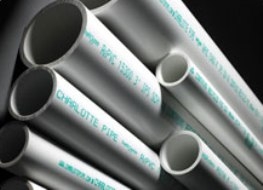This website uses cookies so that we can provide you with the best user experience possible. Cookie information is stored in your browser and performs functions such as recognising you when you return to our website and helping our team to understand which sections of the website you find most interesting and useful.
News
Recommendations for Preventing Legionella in Water Systems Include Using PVC Pipe
Did you know Legionella is now the number one cause of reported waterborne diseases in the U.S., and Legionnaire’s disease, which stems from this pathogen, afflicts and kills more Americans than any other?
If you haven’t heard of it, Legionnaire’s disease is an atypical pneumonia, often spread through inhalation of contaminated aerosols, with 3 to 33 percent of those infections leading to death.
New research released by the National Academy of Sciences (NAS) shares that L. pneumophila, a species of Legionella most often linked to Legionnaire’s disease, has an increased chance of growing on iron and copper pipes than PVC. In fact, “stainless steel, PVC-C and PVC-U did not enhance growth of L. pneumophila in laboratory tests.” One of the primary reasons the study determines that Legionella growth is increased on these metal pipes is due to corrosion—something plastic pipe doesn’t ever experience as it doesn’t react with air and water the same way metal does.
While iron pipe is no longer used in modern building, it’s the legacy iron pipe that we should be worried about. According to the American Society of Civil Engineers, “many pipes laid in the mid-20th century are now beyond their expected lifespan, increasing their risk for main breaks and intrusion, corrosion-enhanced biofilm development, and colonization with Legionella.” These pipes need to be replaced for the health and safety of our communities.
Just one example of Legionnaire’s disease being exacerbated by metal pipe is the Flint, Michigan water crisis. Due to a variety of factors, including corroded pipe, lead leached into Flint’s water supply and according to Virginia Tech research Amy Pruden, laboratory results show that strains of Legionella were throughout the water system. Between June 2014 and November 2015, there were 87 confirmed cases of Legionnaire’s disease, resulting in 12 deaths.
We at VI agree wholeheartedly agree with NAS that proper education and training is a necessity for those who design, oversee and maintain our water systems to prevent future outbreaks of Legionnaire’s disease.
To read the full NAS report, click here.


